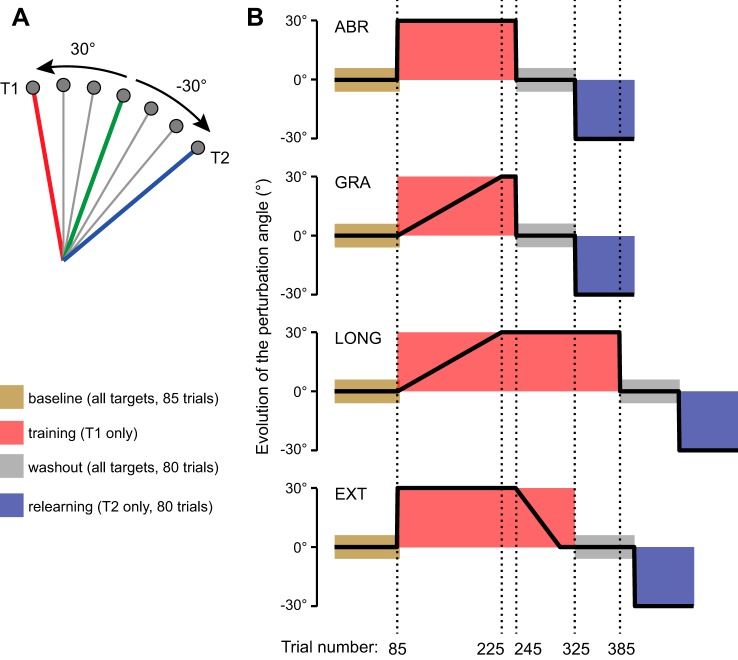Fig. 1.
Methods. A: location of the 7 targets (gray disks) is represented with respect to the starting position. Targets T1 (red line) and T2 (blue line) are associated with a counterclockwise and a clockwise 30° visuomotor rotation, respectively. Therefore, in both cases, the 70° direction highlighted by the green line is the correct hand movement for the cursor to reach target T1 with a 30° visuomotor rotation and target T2 with a −30° rotation. B: each group of 10 subjects experienced a different perturbation schedule as illustrated by the evolution of the perturbation angle over the course of the experiment. Each of the schedules was composed of 4 different phases, which are represented by different colors. During the training phase (red), a counterclockwise rotation was introduced while only T1 was presented. The schedule of the perturbation varied across groups. During the relearning phase, a 30° clockwise rotation was abruptly introduced and only T2 was presented.

